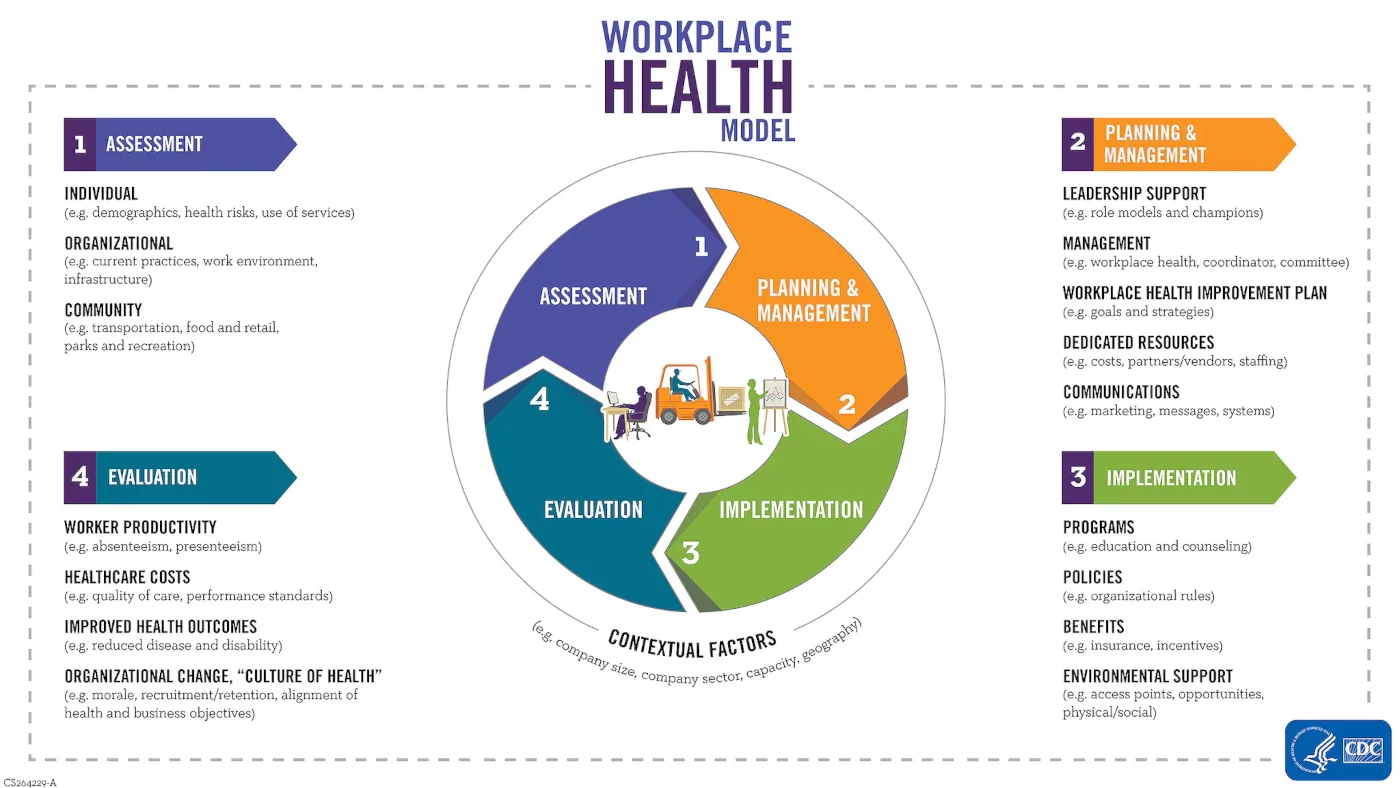Is your company preparing to require remote employees to return to the office? You’re far from alone. Organizations across industries are reversing work-from-home policies, and many are abandoning hybrid schedules in favor of five days a week in the office.
Some employees are pushing back or resigning. Others welcome the change. Many are scrambling to relocate or figure out how to handle lengthy daily commutes. In the midst of all this change, the question on everyone’s mind is:
What’s the best way to handle return-to-office transitions?
While it’s possible to create a seamless return-to-office strategy, you must approach the process carefully. To help, let’s examine what it takes to build a strong policy.
The importance of a return-to-office strategy
A well-thought-out return-to-office strategy is crucial for organizations navigating the post-pandemic landscape. With a significant percentage of employees working remotely, business leaders face more than mere logistics. Returning to the office also involves psychological and cultural aspects.
Not everyone will be happy about the change, and it’s important to prepare for potential pushback. According to Gallup, six in 10 employees with remote-capable jobs prefer a hybrid arrangement. About one-third want to work from home full-time, and less than 10% welcome the opportunity to work on-site full-time.
That doesn’t mean return-to-office mandates are unnecessary or impossible to implement. But success does require careful planning.
Objectives of a return-to-office strategy
Building a well-structured return-to-office strategy is crucial for maintaining productivity, employee satisfaction and organizational cohesion. Without a plan, you face serious risks. For example:
- 8 in 10 employers have lost talent to return-to-office mandates
- 1 in 5 workers admit to ignoring return-to-office rules
- In some instances, workers respond to return-to-office policies by fighting back with petitions
However, not all responses are negative. Many employees enjoy the camaraderie that comes with in-office collaboration. And according to recent data, approximately 62% of the current workforce is already in the office full time.
The key to success lies in how you introduce the change. In fact, many organizations collect change management data for this very reason — to better understand how return-to-office transitions affect employees and make adjustments accordingly.
Benefits of a smooth return-to-office strategy
While some employee pushback is unavoidable, a smooth transition back to the office offers numerous benefits:
- Work-life balance: Regular office work sets boundaries on where and when work gets done, eliminating the need to check in after hours.
- Technical support: On-site work ensures everyone has equal access to comfortable office space and proper equipment.
- Improved collaboration: Being physically present often makes it easier to brainstorm, share ideas and engage as a team.
- Increased innovation: Teams that return to a shared environment foster creativity and problem-solving through face-to-face interactions.
Communicate these advantages to your employees, and ask for feedback on what they need when returning to the office. This will help ensure a smooth strategy — one that benefits the company and employees alike by boosting engagement, enhancing collaboration, improving communication and fostering a positive culture.
Return-to-office strategy: 5 best practices for success
Now that we’ve discussed the “what” and “why” of effective return-to-office plans, it’s time to address the “how.” To ensure a smooth transition, be sure to incorporate the following five best practices.
1. Plan for employee safety and health
The dust from the COVID-19 pandemic may have settled, but creating a safe work environment should still be a top priority when returning employees to the office. Clean workspaces, healthy work habits and mental health support all play a role in improving employee well-being and reducing absenteeism. Not sure where to start? The Centers for Disease Control and Prevention offers a detailed, step-by-step guide for building a workplace health program.

2. Explore flexible options
Returning employees to the office doesn’t have to mean the end of flexible work. In fact, many companies still apply hybrid work models — with great results. Whether you use a results-only model or offer staggered office hours, incorporating flexible working arrangements into your return strategy helps cater to individual employee needs. This flexibility allows employees to balance work-life responsibilities more effectively, ultimately leading to increased job satisfaction and productivity. Explore different models to determine which one works best for your workforce.
3. Communicate early and often
Effective communication is vital throughout the return-to-office process. Keep employees informed and engaged, with regular updates on changes to company policies to alleviate concerns and uncertainty. In addition, actively seek employee feedback to show your organization values input. Companies that engage in frequent communication see a significant uptick in employee trust and loyalty, which enhances productivity and morale. When in doubt, monitor your workforce for signs of disengagement so you can respond quickly and understand what needs to change.
4. Don’t overlook diversity
While the benefits of in-office work are many, some researchers suggest overly strict mandates will undo efforts to attract and retain underrepresented workers — and make companies less diverse long-term. To prevent these issues, use people analytics to track diversity and inclusion. This allows you to reduce bias in hiring and accurately assess areas such as pay equity, promotions and demographics for office employees.
5. Replace badging with monitoring
Did you know 20% of workers don’t use assigned badges when they arrive at the office? Relying on traditional badges gives you an incomplete picture of office attendance. Instead, use employee monitoring software to track location-based activity — these systems are far more accurate. In addition to giving you a complete picture of daily work habits, these solutions also make it easy to calculate office space utilization and understand where and when employees are most productive.
How to implement a return-to-office strategy in two steps
The time has come. You built a plan, communicated the benefits and applied best practices. Now it’s time to set your return-to-office strategy in motion. Here’s how to do it right:
Step 1: Assess your workplace readiness
First, evaluate the current state of your workplace. Review your infrastructure, evaluate capacity and identify necessary upgrades. After all, you can’t force people to report to the office if you don’t have a place for everyone to sit. Make sure you can ensure a comfortable, productive environment before you start requiring daily attendance.
Step 2: Develop a phased return plan
Next, create a plan for gradually reintroducing employees to the office environment. This allows you to more easily track outcomes, make adjustments and observe employee responses in a controlled manner. For example, you might:
- Start with a pilot group: Have an initial group of employees return to the office while others maintain a remote schedule, allowing you to test your environment with a small group of workers before rolling out a companywide policy.
- Make the move gradual: Have employees report to the office two or three days a week to start, and gradually increase time spent in the office as teams become more comfortable with commuting and other arrangements.
- Introduce a loose schedule to start: Allow employees to spend part of the day working remotely — such as mornings spent in at-home focus time and afternoons on site for in-person meetings, before gradually increasing the amount of time in the office.
- Embrace flexibility: Tailor policies to individual work needs, considering factors like personal circumstances and commuting distances.
Return-to-office strategy: How to prepare for challenges
While the above strategies help smooth the transition, you should still prepare for potential issues as employees return to the office. Here are some of the most common.
Dealing with employee resistance
Resistance from employees can arise due to varying comfort levels around returning to the office. It’s crucial to engage in open conversations with staff to understand concerns and reduce anxiety. Understanding why employees prefer remote work — and collaborating on solutions that make sense for the business and employees alike — helps ease resistance by showing employee well-being is a top priority.
Managing logistical issues
Technology gaps, transportation, office capacity and resource allocation all need careful attention. Consult HR and facilities management to address any concerns raised by employees. This proactive approach will go a long way in alleviating and even preventing many headaches.
Ensuring compliance with health guidelines
Staying compliant with local health guidelines is non-negotiable. Regularly review local and federal regulations and adjust your policies as needed. Compliance not only helps with employee well-being but also enhances your organization’s reputation as a socially responsible employer.
Give employees time to adjust
Remember: Remote employees grow accustomed to a way of work that differs from five-days-a-week in the office. They’re used to short or nonexistent commutes, quiet home offices and flexible pet and childcare. Expect some resistance and be prepared to listen when team members come to you with questions or concerns. Working together will help ensure you land on a return-to-office strategy that works for everyone.
Create a killer return-to-office strategy with ActivTrak data
If you really want to understand what makes for a successful transition back to the office, employee data is key. And this is where ActivTrak shines. Our award-winning hybrid and remote workforce management software helps you understand how well your employees adapt to return-to-office policies. With real-time data to show where and when people are most productive, it’s much easier to create a successful return-to-office strategy.
Sound like something you could use? Get in touch for help choosing the right plan based on your specific business needs.





